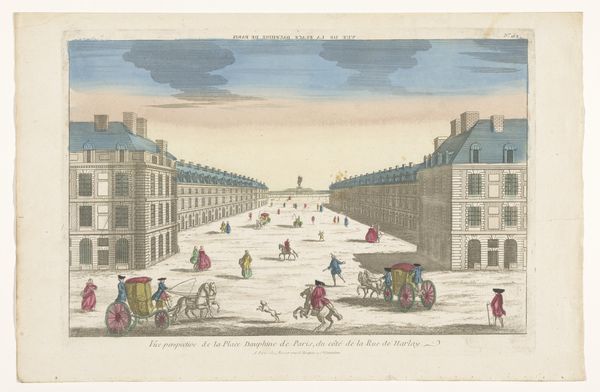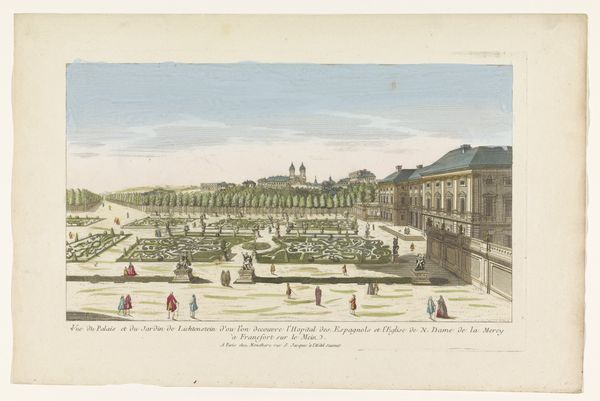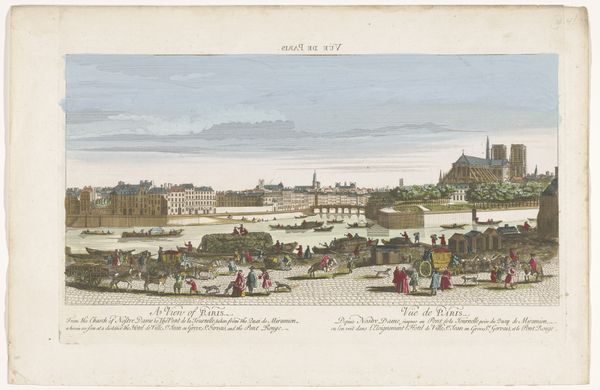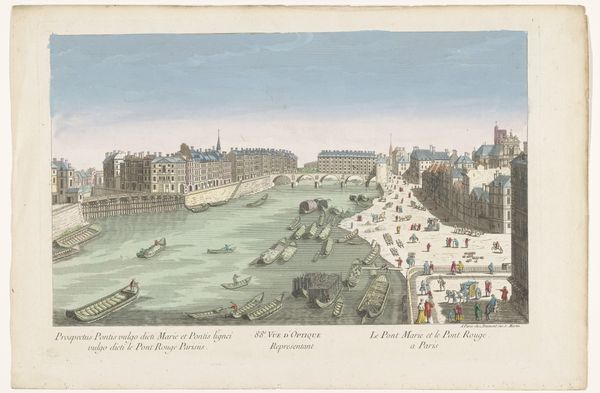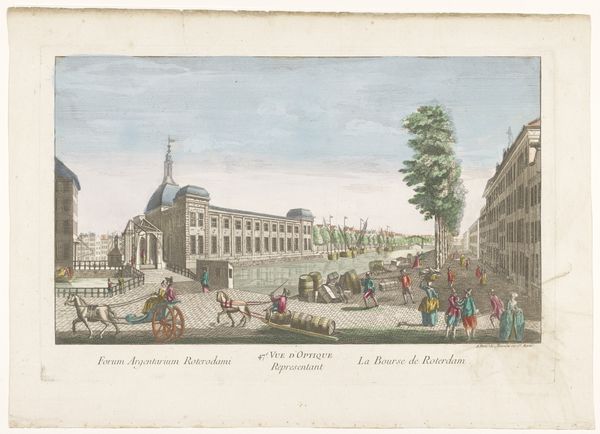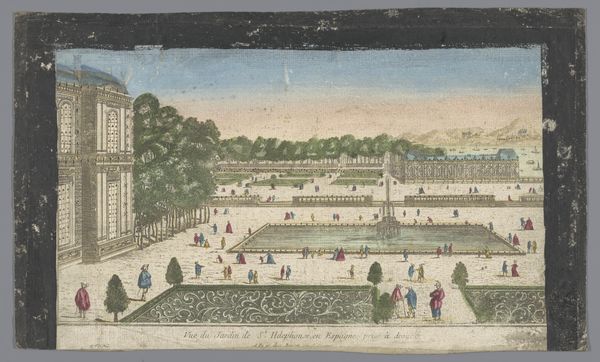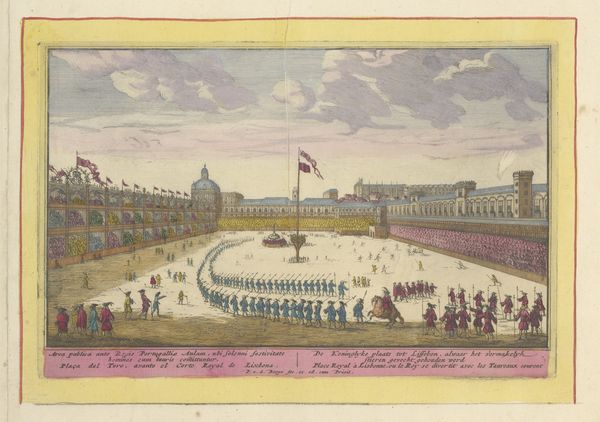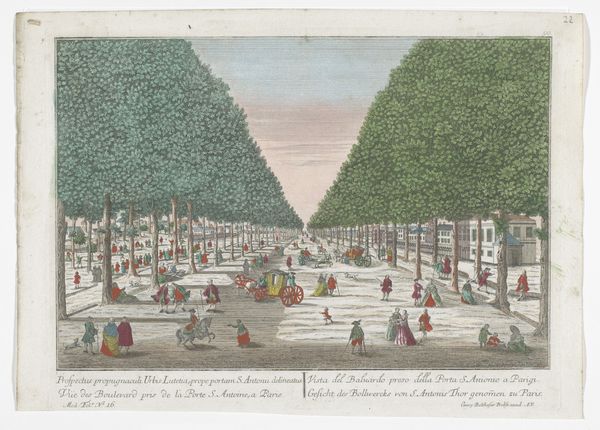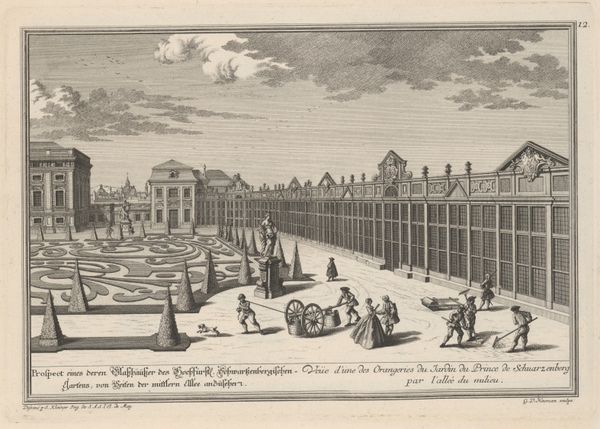
Gezicht op de stad Warschau aan de rivier de Wisla c. 1759 - 1796
0:00
0:00
Dimensions: height 255 mm, width 423 mm
Copyright: Rijks Museum: Open Domain
Curator: We're looking at "Gezicht op de stad Warschau aan de rivier de Wisla," or "View of the city of Warsaw on the Vistula River," a print dating from about 1759 to 1796, made with etching and watercolor, housed here at the Rijksmuseum. Editor: It strikes me as quite utopian, almost dreamlike, despite being a cityscape. The color palette is so restrained. And the people scattered across the foreground—they seem to float on the surface. Curator: The rendering of space definitely pulls from the conventions of the Baroque. The artist, Louis-Joseph Mondhare, has positioned the viewer at an elevated vantage point, allowing for a panoramic vista that speaks to the power and grandeur of the city. But it’s an interesting contradiction isn't it, offering this impression of grandeur through the material humbleness of etching. Editor: Right. And how do we interpret that flattening? Is it merely a stylistic choice or perhaps a reflection of the artist's limited access or the printmaker’s technical constraints? How much was Mondhare directly involved in production or was it outsourced? I’d be interested in investigating similar topographical prints to determine how workshop labor impacted the consistent replication and slight variance of these city views. Curator: Considering the etching medium, mass production was possible, contributing to broader accessibility of this imagery of Warsaw and perhaps solidifying the city's image both for internal and external audiences. The way the buildings almost become a backdrop allows for consideration of who is highlighted here. Wealthy figures are scattered in the foreground and stand in contrast to laborers who work along the waterway. What socio-political ideas do these deliberate distinctions project? Editor: Good point. Who controlled the waterways and therefore the trade routes is an important component to highlight here. The labor to harvest natural materials, like wood and stone, also impacted this environment. Perhaps understanding that consumption dynamic in the mid to late 18th century can connect viewers with this image through ecological study and awareness. Curator: Exactly. This image prompts me to think about how cities brand themselves—or are branded—and the power dynamics inherent in those representations. Editor: Absolutely, understanding the methods, materials, and means can lead to larger conversations about representation, impact and agency.
Comments
No comments
Be the first to comment and join the conversation on the ultimate creative platform.
